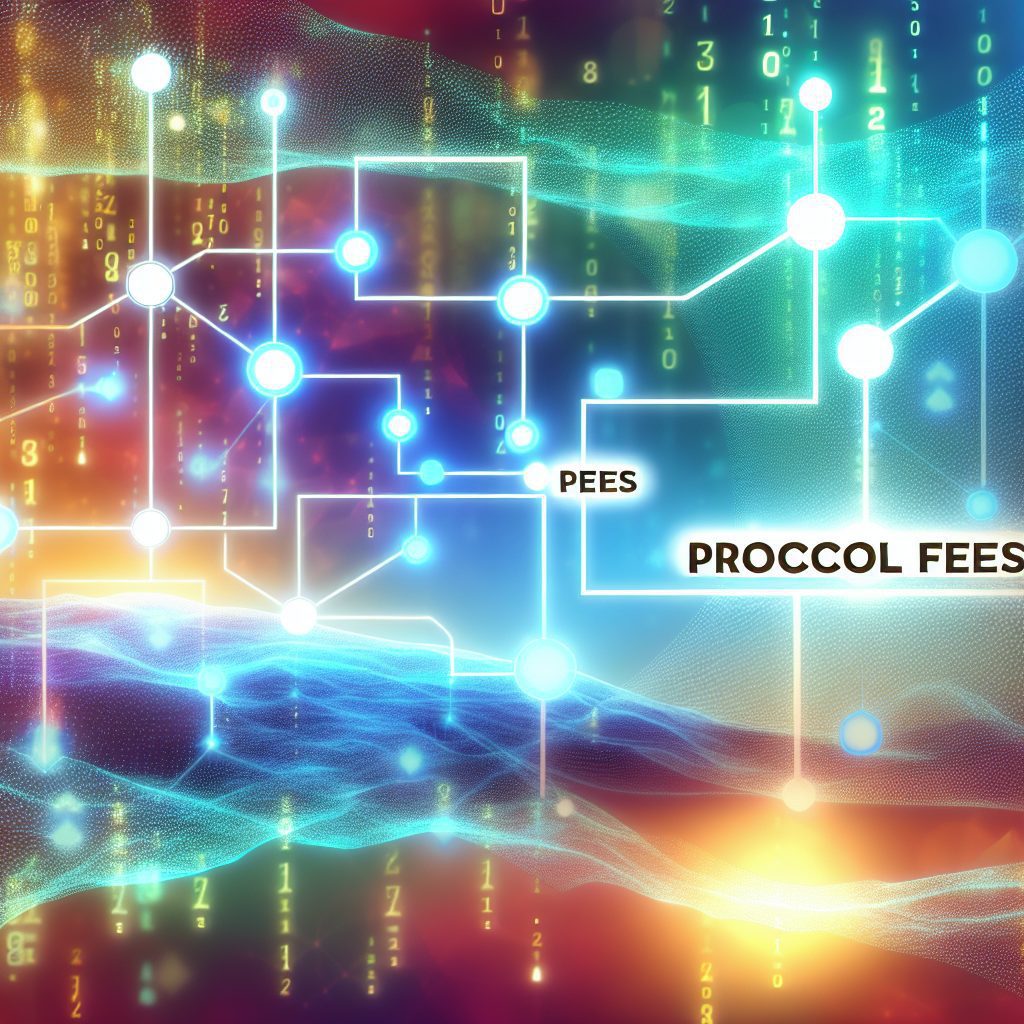Understanding Protocol Fees in DeFi
The rise of Decentralized Finance (DeFi) has transformed the financial landscape, offering users a plethora of services without the need for traditional intermediaries. However, as the DeFi ecosystem expands, understanding the intricacies of protocol fees becomes essential for users looking to navigate this space effectively. This article delves into the various types of protocol fees in DeFi, their implications, and how they affect users and the overall market.
What are Protocol Fees?
Protocol fees are charges imposed by DeFi platforms for utilizing their services. These fees can vary significantly depending on the type of service provided, the underlying blockchain, and the specific protocol’s governance structure. Understanding these fees is crucial for users who want to maximize their returns and minimize costs.
Types of Protocol Fees
Protocol fees can be categorized into several types, each serving a different purpose within the DeFi ecosystem:
- Transaction Fees: These are fees paid to miners or validators for processing transactions on the blockchain. They can fluctuate based on network congestion.
- Trading Fees: Platforms like decentralized exchanges (DEXs) charge fees for executing trades. These fees are often a percentage of the trade amount.
- Liquidity Provider Fees: Users who provide liquidity to a pool earn a portion of the fees generated from trades within that pool.
- Borrowing and Lending Fees: Protocols that facilitate borrowing and lending may charge fees based on the amount borrowed or the duration of the loan.
- Staking Fees: Some protocols charge fees for staking tokens, which can be a percentage of the rewards earned.
The Importance of Understanding Protocol Fees
Understanding protocol fees is vital for several reasons:
- Cost Management: Users can better manage their costs by being aware of the fees associated with different protocols.
- Investment Decisions: Knowledge of fees can influence investment choices, especially when comparing different platforms.
- Maximizing Returns: By understanding how fees work, users can optimize their strategies to maximize returns on their investments.
How Protocol Fees are Determined
Protocol fees are influenced by various factors, including:
- Network Demand: High demand for transactions can lead to increased fees, especially on congested networks like Ethereum.
- Protocol Governance: Some protocols allow token holders to vote on fee structures, which can lead to changes based on community preferences.
- Market Conditions: Overall market conditions, including the price of cryptocurrencies, can impact the fees charged by protocols.
Real-World Examples of Protocol Fees
To illustrate the impact of protocol fees, let’s examine a few prominent DeFi platforms:

Uniswap
Uniswap, one of the leading decentralized exchanges, charges a trading fee of 0.3% on each transaction. This fee is distributed among liquidity providers, incentivizing them to contribute to the liquidity pools. During periods of high trading volume, these fees can accumulate significantly, benefiting liquidity providers.
Aave
Aave is a popular lending protocol that charges borrowing fees based on the interest rate model. Users can borrow assets at variable or stable rates, with fees fluctuating based on supply and demand dynamics. Understanding these fees is crucial for users looking to borrow assets cost-effectively.
Compound
Compound is another lending protocol that allows users to earn interest on their crypto holdings. The protocol charges a small fee on the interest earned, which is used to incentivize liquidity providers. Users must consider this fee when calculating their net returns.
Impact of Protocol Fees on Users
Protocol fees can significantly impact users in various ways:
- Profitability: High fees can erode profits, especially for small traders or investors. Understanding fee structures can help users choose platforms that align with their trading volume.
- Liquidity: Fees can affect liquidity in a market. If fees are too high, users may be discouraged from trading, leading to reduced liquidity.
- Market Dynamics: Changes in fee structures can influence market behavior, as users may migrate to platforms with lower fees.
Strategies for Minimizing Protocol Fees
To navigate the DeFi landscape effectively, users can adopt several strategies to minimize protocol fees:
- Choose the Right Time: Timing transactions during periods of low network congestion can help reduce transaction fees.
- Utilize Layer 2 Solutions: Layer 2 solutions like Optimism and Arbitrum can significantly lower transaction fees compared to the Ethereum mainnet.
- Compare Platforms: Before executing trades or transactions, users should compare fees across different platforms to find the most cost-effective option.
- Participate in Governance: Engaging in protocol governance can provide users with a voice in fee structures, potentially leading to more favorable conditions.
The Future of Protocol Fees in DeFi
The DeFi space is rapidly evolving, and so are the structures surrounding protocol fees. As competition increases, platforms may adjust their fee models to attract users. Innovations such as fee-less trading or dynamic fee structures based on user activity could emerge, reshaping the landscape.
Moreover, regulatory developments may also influence how fees are structured and disclosed, leading to greater transparency and user protection. Keeping an eye on these trends will be essential for users looking to navigate the DeFi ecosystem effectively.
FAQs about Protocol Fees in DeFi
What are the typical transaction fees in DeFi?
Transaction fees in DeFi can vary widely depending on the blockchain and network congestion. On Ethereum, fees can range from a few dollars to over $100 during peak times.
How do I calculate the total cost of a transaction?
To calculate the total cost, add the transaction fee to any trading or service fees charged by the protocol. This will give you a comprehensive view of the costs involved.
Are there any DeFi platforms with zero fees?
While some platforms may offer promotional periods with zero fees, most DeFi protocols charge some form of fee to sustain operations and incentivize liquidity providers.
Can I avoid protocol fees entirely?
While it’s challenging to avoid fees entirely, using Layer 2 solutions or participating in governance can help minimize costs associated with transactions.
Conclusion
Understanding protocol fees in DeFi is crucial for anyone looking to engage with this innovative financial ecosystem. By grasping the different types of fees, their implications, and strategies to minimize them, users can make informed decisions that enhance their overall experience and profitability in the DeFi space. As the industry continues to evolve, staying updated on fee structures and market dynamics will be essential for success.
For the latest news and updates in the cryptocurrency world, consider visiting Bitrabo. Follow me on social media for more insights: X, Instagram, Threads.
Disclaimer: This article is for informational purposes only and should not be considered financial advice. Always conduct your own research before making investment decisions.
The Crypto Watchlist of the Week 🔎
Subscribe to receive expert-curated projects with real potential—plus trends, risks, and insights that matter. Get handpicked crypto projects, deep analysis & market updates delivered to you.


